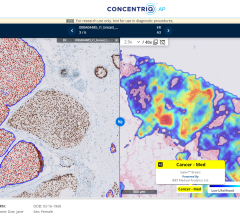
February 17, 2016 — The Centers for Medicare & Medicaid Services (CMS) and America’s Health Insurance Plans (AHIP), as part of a broad Core Quality Measures Collaborative of healthcare system participants, released seven sets of clinical quality measures. These measures support multi-payer alignment, for the first time, on core measures primarily for physician quality programs. This work is informing CMS’s implementation of the Medicare Access and CHIP Reauthorization Act of 2015 (MACRA) through its measure development plan and required rulemaking.
Partners in the collaborative recognize that physicians and other clinicians must currently report multiple quality measures to different entities. Measure requirements are often not aligned among payers, which has resulted in confusion and complexity for reporting providers. To address this problem, the collaborative — which includes CMS, commercial plans, Medicare and Medicaid managed care plans, purchasers, physician and other care provider organizations, and consumers — worked together to identify core sets of quality measures that payers have committed to using for reporting as soon as feasible.
This release is the first from the collaborative, which plans to add more measure sets and update the current measure sets over time. CMS and the partner organizations believe that by reducing the complexity for providers and focusing quality improvement on key areas across payers, quality of care can be improved for patients more effectively and efficiently.
“In the U.S. healthcare system, where we are moving to measure and pay for quality, patients and care providers deserve a uniform approach to measure quality,” said CMS Acting Administrator Andy Slavitt. “This agreement today will reduce unnecessary burden for physicians and accelerate the country's movement to better quality.”
The guiding principles used by the collaborative in developing the core measure sets are that they be meaningful to patients, consumers and physicians while reducing variability in measure selection, collection burden and cost. The goal is to establish broadly agreed-upon core measure sets that could be harmonized across both commercial and government payers.
The core measures are in the following seven sets:
- Accountable Care Organizations (ACOs), Patient Centered Medical Homes (PCMHs) and Primary Care
- Cardiology
- Gastroenterology
- HIV and Hepatitis C
- Medical Oncology
- Obstetrics and Gynecology
- Orthopedics
“The AAFP’s involvement in the Collaborative is aimed at improving the quality of care while making family physicians’ lives easier by simplifying the information they are being asked to provide to payers,” said Douglas E. Henley, MD, Executive Vice President and Chief Executive Officer of the American Academy of Family Physicians. “We are acutely aware of the huge amount of administrative complexity and burden that impacts the daily work of our members and diverts time and resources away from direct patient care. A major part of this is the burden of multiple performance measures in quality improvement programs with no standardization or harmonization across payers. This agreement on a set of core measures for primary care and the PCMH represents a big step toward the goal of administrative simplification for family physicians and improved quality of care.”
Implementation of the measures will occur in several stages:
- CMS is already using measures from the each of the core sets. Using the notice and public comment rule-making process, CMS also intends to implement new core measures across applicable Medicare quality programs as appropriate, while eliminating redundant measures that are not part of the core set.
- The Health Care Payment Learning and Action Network (HCPLAN), a public-private collaboration established by CMS, will integrate these quality measures into their efforts to align payment model components with public and private sector partners.
- CMS is using new tools from MACRA to support quality improvement and alignment. For example, MACRA provided additional funding to create and implement new measures where gaps exist and to align measures with the private sector. CMS has also developed a draft Quality Measure Development plan, which was informed by the development of the core measure sets and identification of key measure gaps. The plan is currently available for review and public comment.
- CMS is working with federal partners including the Office of Personnel Management, Department of Defense and Department of Veterans Affairs, as well as state Medicaid plans, to align quality measures where appropriate.
- Commercial health plans will implement these core sets of measures as and when contracts come up for renewal or if existing contracts allow modification of the performance measure set.
- The Core Quality Measures Collaborative views the upcoming year as a transitional period, as it begins adoption and harmonization of the measures. Ongoing monitoring by the collaborative of the use of these measures will enable modifications of measure sets, as needed and based on lessons learned, including minimizing unintended consequences and selection of new measures as better measures become available.
The collaborative will continue to convene to monitor progress, invite broader participation, and add additional measures and measure sets.
“Members of the collaborative have taken a leadership role in identifying measures that will drive quality improvement and outcomes for patients,” said Carmella Bocchino, Executive Vice President, America’s Health Insurance Plans. “This is a first step of an ongoing process to ensure both public programs and the private sector align measures and reporting especially as we advance alternative payment models.”
Patient groups were a vital part of the collaborative and their participation is critical to ensure that people receive the benefit of high quality care.
For more information: www.cms.gov


 November 11, 2025
November 11, 2025 









